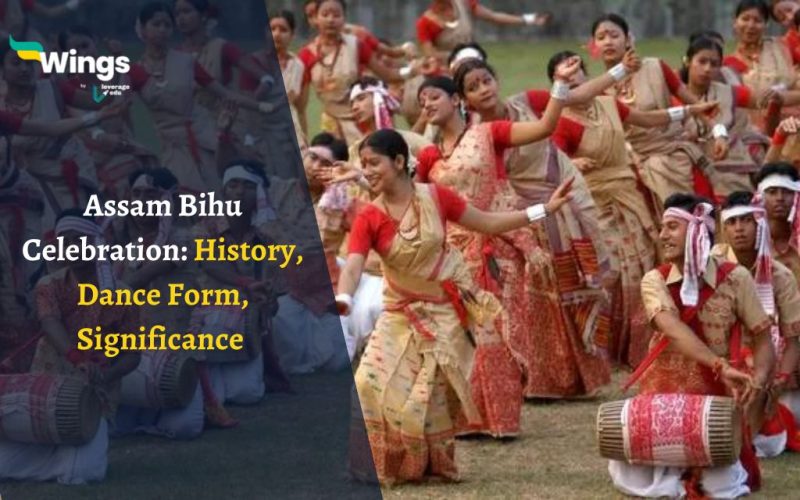Bihu, often called the “Festival of Assam,” has an intriguing history that dates back centuries. In the lush, tea-scented landscapes of Assam, a dance form as colorful as its cultural heritage thrives – Bihu. This traditional dance and festival have deep historical roots, captivating rhythms, and immense significance in the lives of the Assamese people. In this blog, we’ll embark on a journey through the history, the artistic essence, and the profound cultural significance of Bihu.
Also read – What are the Different Dance Forms of India?
Bihu History: A Glimpse
Its origin can be traced to the agrarian roots of Assam, where farmers celebrated the changing seasons and the bountiful harvests. The word “Bihu” itself is derived from the Sanskrit word “Bishu,” meaning “to ask for prosperity from the Gods.”
It is the most popular folk festival of Assam, India. It is celebrated in three different seasons: Bohag Bihu (Spring), Bhogali Bihu (Winter), and Kati Bihu (Autumn). The festival is a celebration of life, harvest, and the Assamese culture.
Bihu as a Dance Form
At the heart of Bihu is its enchanting dance form. This dance is an exuberant and vivacious celebration of life, love, and the changing seasons. Dancers clad in vibrant traditional attire sway to the rhythms of the dhol (drum), the nagada (cymbals), the pepa (flute), and the mukhia gaja (stringed instrument). The graceful yet energetic movements of the dance evoke the very essence of Assam’s countryside.
The dance is marked by the “Jhumur” style, where performers gracefully form circles and serpentine patterns, mirroring the sway of Assam’s lush paddy fields. The lively steps and hand movements are complemented by the melodious tunes of Bihu songs, expressing themes of love, nature, and daily life.
Also Read – Kuchipudi Dance History and Types: A Dive into the Classical Tradition of Andhra Pradesh
The Significance of Bihu
Bihu transcends being merely a dance form or festival; it is the heartbeat of Assam’s culture. Its significance extends to various aspects of life:
1. Agricultural Celebration: Rongali Bihu, in particular, marks the Assamese New Year and the onset of the agricultural season. Farmers offer prayers for a bountiful harvest and seek blessings for their crops.
2. Social Bonding: Communities and families get together. It’s a time for reunions, feasting, and strengthening bonds. Young and old, rich and poor, all partake in the festivities with equal zeal.
3. Cultural Preservation: It serves as a vital link to Assam’s cultural heritage. Through dance, music, and rituals, it is able to conserve its culture.
4. Expression of Love: The Bihu songs often speak of love and desire. Young couples use this festival as a platform to express their feelings and court one another.
5. Harmony with Nature: It is intricately tied to nature’s rhythms. It celebrates the changing seasons, fostering a deep sense of harmony with the environment.
In conclusion, Bihu is not just a dance form or a festival; it is a tale of Assam’s history, culture, and traditions. It’s a celebration of life itself, where the pulse of the earth resonates with the heartbeat of its people. When one witnesses the vibrant colors, hears the infectious rhythms, and feels the energy, one is not just witnessing a dance but rather experiencing the soul of Assam, and is becoming a part of a rich and timeless tradition that continues to thrive in the modern world.
Also Read – Kathak Dance Is From Which State?
QUIZ
Results
#1. Which one of the following is not Bihu?
#2. Bihu is festival of ___________?
#3. Which of the following is a dance form?
For more such interesting and informative topics on Indian History and more, stay tuned to our General Knowledge section. If you want to know more about studying abroad, reach out to our experts on Leverage Edu!
 One app for all your study abroad needs
One app for all your study abroad needs
















